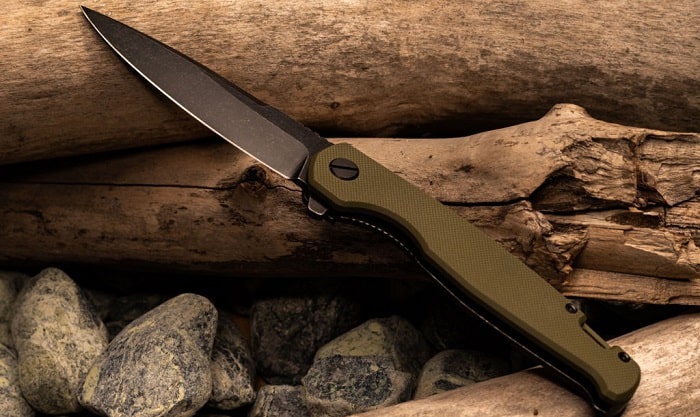For many, a folding knife is more than just a tool; it’s a piece of art, history, and craftsmanship. Whether you’re a seasoned collector or just starting, building a folding knife collection can be an exciting journey. In this article, we’ll explore various tips and insights to help you curate an impressive collection.

Understanding the Basics of Folding Knives
Before diving into collecting, it’s essential to understand what makes a folding knife unique. Unlike fixed blade knives, folding knives have a pivot mechanism allowing the blade to fold into the handle. This makes them compact and ideal for everyday carry. Familiarize yourself with terms like liner lock, slip joint, and framelock, as these are fundamental concepts in the folding knife world.
Importance of Blade Material
The blade material is crucial when collecting knives. Popular materials include stainless steel, carbon steel, and Damascus steel. Each has its own set of advantages. For instance, stainless steel is known for its corrosion resistance, while carbon steel offers superior edge retention. Damascus steel is cherished for its beautiful patterns and strength. Understanding these differences will help you make informed choices for your collection.
Setting a Budget for Your Collection
Collecting knives can be an expensive hobby, so it’s crucial to set a budget. Determine how much you’re willing to spend and stick to it. Consider starting with more affordable knives and gradually investing in higher-end pieces as your collection grows. Remember, a well-curated collection isn’t about the number of knives but the quality and uniqueness of each piece.
Researching and Learning
Knowledge is power in the world of knife collecting. Spend time researching different brands, knife makers, and styles. Join forums, attend knife shows, and read books to expand your understanding. Websites like Artisan Cutlery provide valuable insights into choosing the right folding knife for your collection.
Building Your Collection
Once you’ve established a budget and done your research, it’s time to start building your collection. Here are some tips to guide you:
Choose a Theme
Having a theme can add coherence to your collection. Some collectors focus on specific brands, while others might choose knives from a particular era or with a unique mechanism. A theme can make your collection more meaningful and enjoyable to build.
Focus on Quality Over Quantity
It’s tempting to acquire as many knives as possible, but quality should always take precedence over quantity. A single high-quality knife can be more valuable and rewarding than several mediocre ones.
Attend Knife Shows and Events
Knife shows and events are excellent opportunities to discover new knives, meet other enthusiasts, and learn from experts. These events often feature exclusive pieces not available elsewhere. Additionally, you can gain firsthand knowledge about the knives you’re interested in.
Caring for Your Folding Knives
Proper care and maintenance are crucial for preserving the value and functionality of your knives. Here are some essential care tips:
Regular Cleaning and Oiling
Regularly clean your knives to prevent rust and corrosion. After cleaning, apply a light coat of oil to the blade and pivot areas to ensure smooth operation. This simple routine can significantly extend the life of your knives.
Proper Storage
Store your knives in a cool, dry place to prevent moisture damage. Consider using a display case with a soft lining to protect your knives from scratches and dust. Some collectors also use silica gel packs in storage areas to reduce humidity.
Legal Considerations
Before expanding your collection, familiarize yourself with knife laws in your area. Some locations have specific regulations regarding blade length and knife types. For more information, visit Legal Blade Length for guidance on legal considerations for folding knives.
Exploring Different Knife Styles
The world of folding knives is diverse, with a plethora of styles to explore. From traditional pocket knives to modern tactical designs, there’s something for every collector. Here are a few styles to consider:
Traditional Pocket Knives
Traditional pocket knives are timeless and often feature classic designs passed down through generations. They are a favorite among collectors who appreciate history and craftsmanship.
Tactical Folding Knives
Tactical folding knives are designed for durability and functionality. They often feature advanced materials and innovative locking mechanisms, making them a popular choice for collectors seeking modern designs.
Custom and Handmade Knives
Custom and handmade knives are unique pieces crafted by skilled artisans. These knives often feature personalized designs and high-quality materials, making them highly sought after by collectors.
The Joy of Sharing Your Collection
Sharing your collection with others can be a rewarding experience. Whether it’s through social media, forums, or in-person gatherings, showcasing your knives allows you to connect with fellow enthusiasts and gain new perspectives on your collection.
Conclusion
Building a folding knife collection is a journey filled with discovery, learning, and passion. By following these tips and continually expanding your knowledge, you can curate a collection that reflects your interests and values. Remember, the true value of a collection lies in the stories and experiences it represents.

FAQs
What is the best way to start a folding knife collection?
Start by researching different knife brands and styles. Set a budget and focus on acquiring quality pieces that align with your interests.
How do I maintain my folding knives?
Regularly clean and oil your knives to prevent rust and ensure smooth operation. Store them in a cool, dry place to protect them from moisture damage.
Are there any legal restrictions on collecting folding knives?
Yes, knife laws vary by location. It’s essential to familiarize yourself with local regulations regarding blade length and knife types. Refer to resources like Legal Blade Length for more information.
This article contains affiliate links. We may earn a commission at no extra cost to you.


